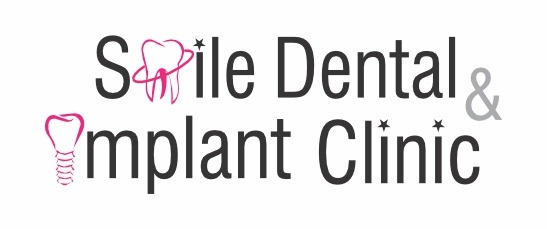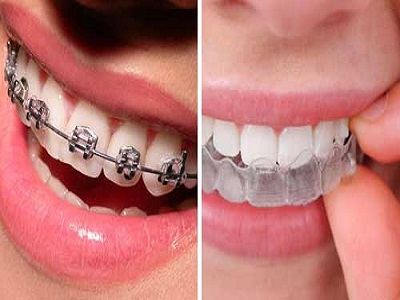Supports are orthodontic gadgets that fix warped and skewed teeth.
Dental supports are utilized for both stylish and practical reasons, not exclusively to address a patient's grin yet in addition to realign their jaw.
Supports are accessible for individuals, everything being equal. In spite of the fact that kids somewhere in the range of 10 and 14 years old are the most widely recognized age gathering to seek treatment.
How Do Braces Work?
Orthodontic treatment is different for each tolerant relying upon their requirements, jaw and teeth design, and age. There are seven fundamental parts of supports that interface together to realign teeth and make a better grin over the long haul, including:
Section
The most famous sorts of dental supports use sections, which are little, square-formed bits of metal or ceramic. They are set in the focal point of every tooth and are amazed by relying upon the patient's requirements and the way in which their teeth are adjusted.
Archwire
A metal archwire fits through the focal point of the sections and applies to progress strain to the teeth. The wire gradually moves teeth into their optimal positions.
Versatile Ligature
Versatile ligatures are little elastic groups that circumvent each section. Ligatures guarantee the archwire stays in its space. They likewise assist with directing teeth into their right positions. The elastics arrive in various sizes and varieties and are supplanted during each orthodontic change arrangement.
Chain Elastic
Chain elastics, or power chains, supplant the flexible ligatures on every tooth. They add significantly more strain to the teeth and make a fixing force that arranges the teeth. Ordinarily, power chains are utilized toward the finish of treatment.
Wire Ligature
Wire ligatures are meager, tempered steel wires that keep the archwire set up. The wires protect the singular sections of every tooth. These might be utilized instead of versatile ligatures when it is challenging to keep the archwire in the section.
Curl
Curls, likewise called loop springs, are situated between two sections when the teeth are excessively near one another (cross-over). Loops separate the teeth and reestablish a patient's chomp.
Elastic Band
Elastic groups are appended to snares and associate the top and base sections together. They guarantee the teeth line up appropriately and assist with repositioning the jaw. Elastic groups are put and taken out day to day by the patient.
4 Types of Braces
There are many types and more than 100 brands of supports to browse.
For grown-ups, more stylish choices are accessible for individuals who don't need apparent metal supports. For instance, clear ceramic supports reflect the size and state of metal supports however are really made of porcelain.
Four normal kinds of dental support include:
Customary Metal Braces
Customary metal supports are the best and most reasonable orthodontic treatment choice.
An orthodontist effectively moves the teeth in little augmentations during normal check-ups. For youngsters and adolescents, customary supports are the most well-known choice. Choices for grown-ups are likewise accessible in the event that they wouldn't fret apparent metal sections.
Clear Braces
Clear supports, likewise called fired or imperceptible supports, are similar in size and shape to metal supports and fill a similar need.
The primary distinction between the two kinds is that unmistakable supports have tooth-shaded sections, and that implies they mix in with normal teeth and are less perceptible. The elastic groups and flexible parts of clear supports are likewise transparent or white. Undetectable supports are great for teenagers and grown-ups.
Lingual Braces
Lingual supports are a less popular, elective choice than conventional metal supports. This "imperceptible" orthodontic treatment is like ordinary support. The principal distinction is that the sections and wires are put on the backs of teeth.
Lingual supports utilize similar equipment and techniques as customary "outside" supports.
Clear Aligners
Clear aligners, like Invisalign, are another famous "imperceptible" orthodontic treatment choice. They are negligibly obtrusive and removable.
They ordinarily cost equivalent to customary metal supports. Teeth move a small part of a millimeter at a time and require fewer in-office visits. Aligners are a well-known choice for teenagers and grown-ups.
Supports and Headgear
Orthodontic headgear is a machine that treats a wide range of chomp issues.
The machines connect to your face or head with a necktie. Treatment is normally just fundamental in the event that a kid has an overbite, underbite, overjet, crossbite, or open chomp. Most instances of gentle to reasonably slanted teeth can be fixed with supports alone.
Headgear must be utilized in blend with supports. Supports move teeth, while headgear is equipped for affecting the development of the jaws. Just youngsters are possibilities for headgear in light of the fact that their jaws are not completely evolved.
Position of Braces and Treatment Plan
1. Conference
A top-to-the-bottom orthodontic conference is expected before the arrangement of supports. The orthodontist suggests the best treatment choice relying upon individual requirements.
2. Prior to Treatment
Teeth should be profoundly cleaned by a dental specialist before supports are set. On the off chance that other oral consideration medicines are required, like periodontal sickness therapy, cavity fillings, or tooth extractions, they should be finished before orthodontic therapy.
3. First Appointment
During the primary encounter with an orthodontist, x-beams are taken of the patient's mouth and custom molds are made.
4. Situation of Braces
The holding arrangement requires around two hours. The orthodontist dries the patient's teeth, puts the supports on utilizing a unique cement, solidifies the glue with a restoring light, and sets the bond. At last, the orthodontist runs the archwire through the sections and applies the ligature to keep every one of the materials set up.
5. Follow-Up Appointments
Inside four to about two months after the arrangement, the first subsequent arrangement is booked. The orthodontist regularly trades out elastics and archwires to guarantee the teeth are moving in the correct bearing. A patient visits their orthodontist each four to about two months until the supports are taken out. Supports are left on for a considerable length of time to three years.
6. Last Appointment
The sections and comparing materials fall off without any problem. The orthodontist first eliminates the holding glue, sections, wire, and elastics. Then, at that point, the polish is cleaned. At last, a super durable or removable retainer (mouthguard) is made to guarantee the patient's teeth stay set up.
7. Aftercare
While supports are set up, giving additional consideration to oral consideration rehearses is vital for see the best outcomes. Flossing and brushing are suggested after each feast. This guarantees food, flotsam, and jetsam, and microscopic organisms don't stall out between the sections and cause more serious dental circumstances.

